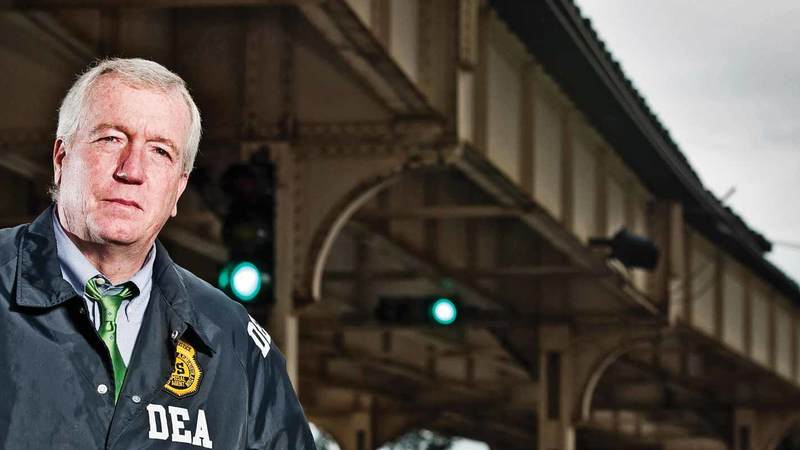Notre Dame fan Jack Riley has used a team approach to wage war against drug lords and dealers. His life has been a long and tenacious fight to end up on the winning side.
As the sun baked the 50 miles of Interstate 10, linking Las Cruces, New Mexico, to El Paso, Texas, Jack Riley drove to his first day of a new job, submerged in the rank smell of death.
The desert sand slapped Riley’s car as he sped 80 mph south along a highway lined on both sides by slaughterhouses.
It was supposed to be a big honor to go to the border and work as the U.S. Drug Enforcement Agency’s special agent in charge of operations in El Paso, overseeing half of west Texas and all of New Mexico, an area that encompasses around a third of the U.S. border with Mexico.
It was a promotion after two decades of working his way through the agency, from a Mercedes-driving undercover operative to a Quantico trainer to a Washington suit to a leadership spot in St. Louis. All of that put him on the road to El Paso in 2005.
The last man with this job hadn’t brought his family south. He had felt it wasn’t worth the risk for them to live across the border from Ciudad Juarez, Mexico, the murder capital of the world with more than 10,500 recorded murders during a killing spree over several years — fueled by two warring Mexican drug cartels.
Riley couldn’t imagine leaving behind his wife or his son, just starting his freshman year of high school. So they settled in Las Cruces, about an hour’s commute from the DEA headquarters in El Paso.
“I’m driving down Interstate 10 and I’m thinking to myself ‘What have I gotten myself into?’” Riley recalls. “I see out of my rearview mirror — now, I’m in the middle of nowhere because there is desert on both sides, nobody lives anywhere here, so I see this truck coming up behind me going really fast.”
The vehicle starts accelerating, blows past him and slams into the car yards in front of him.
“[The driver] then gets out of the truck and runs into the desert,” Riley says. “I thought to myself, ‘What?’ Obviously he stole the truck and was trying to make a run for the border.
“That was my first day.” And he hadn’t gotten to the office yet.
On the frontlines
It’s been more than 40 years since President Richard M. Nixon declared a “war on drugs.” Riley has worked in the DEA for 27 of them.
He’s spent a career fighting a battle he knows he’ll never win, especially before his forced retirement in three years when he hits the agency’s mandatory retirement age. He is currently the DEA’s special agent in charge of the Chicago Field Division, overseeing agents, wiretaps and undercover operations in five Midwestern states. He leads a number of groups that connect intelligence between the DEA and local police, as well as his agency and foreign governments, a significant shift in the once-unilateral way drugs were policed.
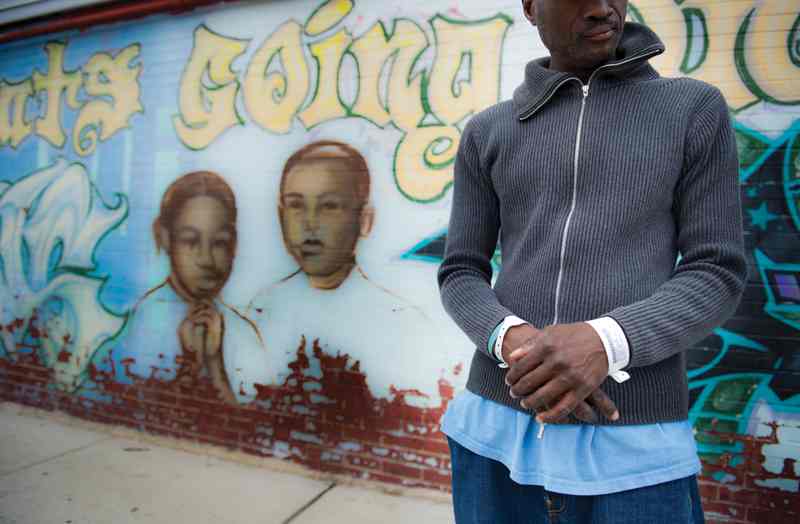
The drug war was once a fight for the feds alone. Local police arrested low-level users. The DEA went after the big guys, the major drug suppliers. But more than two decades ago, the DEA started deputizing local police officers to help work cases with the feds. The feds needed local know-how on the street. The local governments needed federal money.
“If we had 25,000 sworn DEA agents, we wouldn’t rely on our state and local partners as much as we do,” Riley explains. “But we need them for the intelligence, we need their partnership, we need their expertise.” Riley sees himself as a coach who builds a team out of anyone who can contribute to the successful prosecution of a case, regardless of the uniform they wear.
Around 7:20 p.m. on March 5, for example, Chicago police stopped two brothers, Mario and Omar Coria, in the hipster Bucktown neighborhood for running a red light, according to a federal indictment from the office of the U.S. Attorney for the Northern District of Illinois. The brothers were driving a flatbed tow truck with a blue Honda Prelude on top.
One cop asked if the Prelude was stolen, since it was registered to a third person, the complaint says. The brothers said no, police seized the car anyway and the brothers drove off in the tow truck.
Within the hour the driver, Mario Coria, called a third man, Alberto Guadarrama, telling him over and over that the Honda had “broken down.”
“No, I’m telling you that the…the car was taken by the clowns, man,” Mario Coria said.
Inside the Honda, DEA agents found what they had expected — 20 kilograms of high quality heroin separated into 20 packages. The three men and seven others were arrested and charged with a variety of federal drug trafficking charges in an investigation where the DEA seized 21.5 kilograms of heroin and 5 kilograms of cocaine, according to the Northern District attorney’s office. As of November, the cases against the men were pending in federal court.
This wasn’t just a lucky traffic stop by a couple of eagle-eyed cops. It was the culmination of an investigation that started in 2010 with a tip from a confidential informant. Ultimately, five suburban police agencies assisted Chicago police and the DEA with the investigation. DEA personnel in Indiana, Wisconsin and Texas all played a role in the arrests.
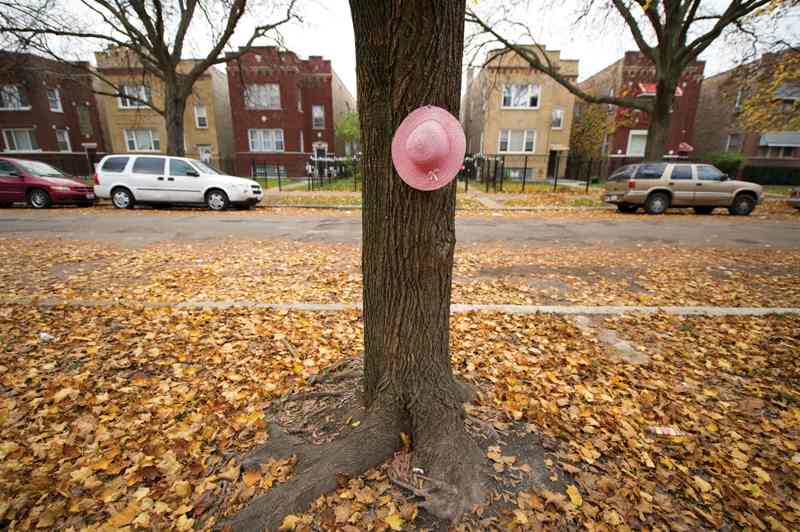
For Riley, the case is a typical example of working off a tip and building a case until it strikes at a distribution network. “We go wherever we have to go,” he says. “We have to work on the people who are really in control. We have to eliminate the organization. And the organization begins on the street with a young guy pulling a gun and shooting somebody. But it also goes to [Sinaloa cartel head] Chapo Guzman, who is hiding on a mountaintop in Culiacán, Mexico, making phone calls that affect what goes on here in the streets of Chicago.”
And on the city streets, where Guzman makes his money, people are watching. “I would venture to say in every corner of this city right now there are DEA agents and Chicago police officers sitting in a car, operating in the shadows where nobody sees them watching people,” Riley says. “The whole idea is to put a case together, an investigation together, and try to identify as many people who are involved in those cases as possible. So that we can prosecute them and get them off the street.
“And that goes on around the clock.”
The enemy
At 54, Riley reports to duty daily in an office suite with a bland waiting room similar to one at a dental office — except for the pamphlets explaining how to safely dispose of prescription painkillers. He is battling to stem the tide of drugs that flow into America’s inner cities, leaving bloodshed and havoc in their wake. Increasingly, he is battling drugs — both distribution and use — in the suburbs.
His chief enemy, he believes, is the group of Mexican drug cartels, the well-financed, expertly managed networks of drug runners who use Chicago’s central location and massive transportation infrastructure to distribute narcotics across the country. From marijuana to heroin to the ingredients used for making methamphetamine, cartels have their tentacles in every type of illegal drug in America.
“They’re really our number one problem, really across the country but specifically here in the Midwest,” Riley says from his office on the 12th floor of the John C. Kluczynski Federal Building, across the street from the federal courthouse, the scene of former Illinois Governor Rod Blagojevich’s 2011 corruption trial. “They are ruthless. We’ve never seen criminal organizations as well-financed, as vicious…I got firsthand experience in just how vicious they are when I was the boss on the border.”
Chicago has the network of railroads, highways, even inland shipping to transport mass quantities of virtually anything, including illegal drugs. The city, with the second largest Mexican population outside of Mexico, has an active network of Mexican smugglers who learned the trade bringing blue jeans and hot peppers north before trading in something far more lucrative. Drug smugglers hide easily among those making their way in honest trades, and Chicago’s more than 100,000 documented street gang members provide the distribution end of an international business estimated to rake in $65 billion every year.
“Of course, the way they regulate themselves is through violence,” Riley says. “There’s no FCC or something regulating how they do business. They do it with the barrel of a gun.”
Or, in parts of Mexico, the sharp blade of a machete. Riley’s chief enemy is Joaquin “El Chapo” Guzman, the leader of the Sinaloa drug cartel who once put a bounty on Riley’s head. “Chapo,” which means “Shorty,” is on the Forbes list of billionaires. And he is wanted on dozens of racketeering and conspiracy-related narcotics charges in the United States.
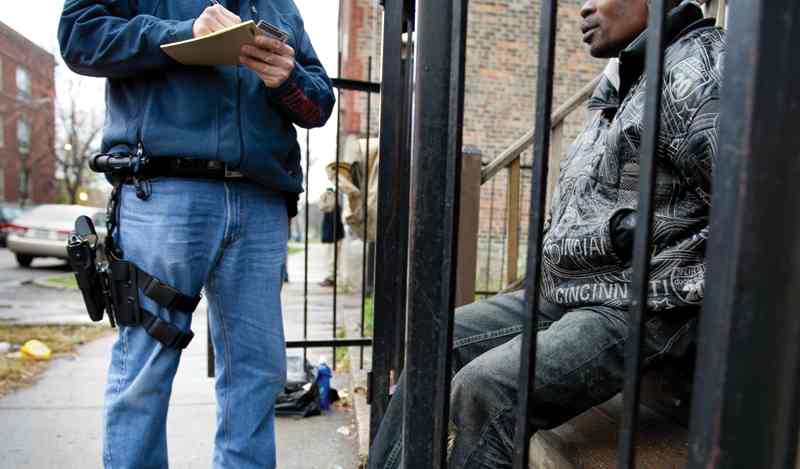
Beheading is his signature method of assassination. His subordinates carve “narco messages” into the victims, warning rival drug cartels to get out of Juarez. The beheadings and mutilations often appear briefly as Internet videos, a warning to any who would try to cross the 5-foot-6-inch terror.
Riley has overseen the arrest of several of Chapo’s lieutenants, including Alfredo Vasquez Hernandez, believed to be Chapo’s closest friend. As of October, he
was in federal custody in Chicago after being extradited from Mexico. Also arrested under Riley’s watch was Jesus Vicente Zambada-Niebla, another high-ranking member of the Sinaloa cartel who, as of October, was such a security risk he was transferred out of Chicago to a federal lockup in Michigan.
Riley has caught a few of the Sinaloa cartel’s big fish. But it’s the little guy, Shorty, that Riley’s after. “There’s not a day I don’t come to work that I hope I read that either we captured Guzman or one of his rivals put a bullet in his head,” Riley says. “His time’s coming. There’s no question about it. Once he’s caught I think I’ll have a little different feel about retiring.”
While Guzman hides on a Mexican mountain, he makes his money through a massive illegal drug distribution organization in Chicago and throughout Middle America. Hitting at those channels, Riley says, is how the DEA can make the biggest impact in terms of affecting Guzman’s organization.
While Riley’s enemies are the narcotics-trafficking Mexican cartels, they are the supply side of the business. Supply simply meets the demand. Across America, nothing unites people of every race, ethnicity and income level quite like our country’s collective need for speed. Or, in the case of the estimated 18.1 million American marijuana users, the lack thereof.
“Here in the United States now clearly our appetite for illegal drugs is probably second to none around the world,” Riley says. “We’re a country for the most part that’s affluent compared to some of the other countries. And we’ve got a culture that for many, many years said that drug use is okay. And, clearly, the people that are involved in that don’t see the damage that it does to the inner city. They don’t see the damage that it does to the rural parts of this country,” where the roots of methamphetamine production and addiction lie.
Riley has never wavered from the belief he is on the right side of the fight against drugs. “For me, it’s very black and white, and that’s why I’m an old-school guy,” Riley says. “This is good versus evil. I look at the drug problem not as a war but as a public health issue that’s never going away. And unfortunately, I’ve seen firsthand what it can do to families, communities, institutions. It is an issue that we’re going to be grappling with for the rest of our existence.”
How he got here
At 1:30 a.m. on October 10, Riley’s ringing cell phone wakes him up. It’s his counterpart in Los Angeles, letting him know a Mexican heroin and money-laundering case is coming his way.
By 9 a.m. Riley is in a generic wood-paneled conference room, on the phone with some of the representatives of more than 40 different agencies that have a piece of the case moving from the West Coast to Chicago. He spends more than an hour listening, trying to fit diverse bits and pieces into a case that can eventually be prosecuted. “I listen to everybody and I pretty much say, ‘This is the play we’re gonna run,’” Riley explains. “‘Go get ’em.’”
On and off for more than two decades, in his downtime, Riley was a high school basketball coach, a red-faced, skinny guy bursting with inspirational sports phrases in the locker room and demanding nothing but the best from his players on the court.
He’s a storyteller who can’t stop exuberantly regaling folks about his adventures, like the time he stopped a man high on PCP — a man who thought he had superhuman strength — by hitting the guy with his car.
A devoted Notre Dame fan, his office bursts with Fighting Irish paraphernalia, from the enormous blue-and-gold ND-monogrammed carpet to the leprechaun lamp, the framed Lou Holtz picture and the gold football helmet that perches on a coffee table. He dresses for work in Notre Dame sportswear, a reminder of the team mentality he instills in his agents.
No agent goes into a criminal situation alone, and Riley is justifiably proud that they’ve all come back alive from often perilous missions.
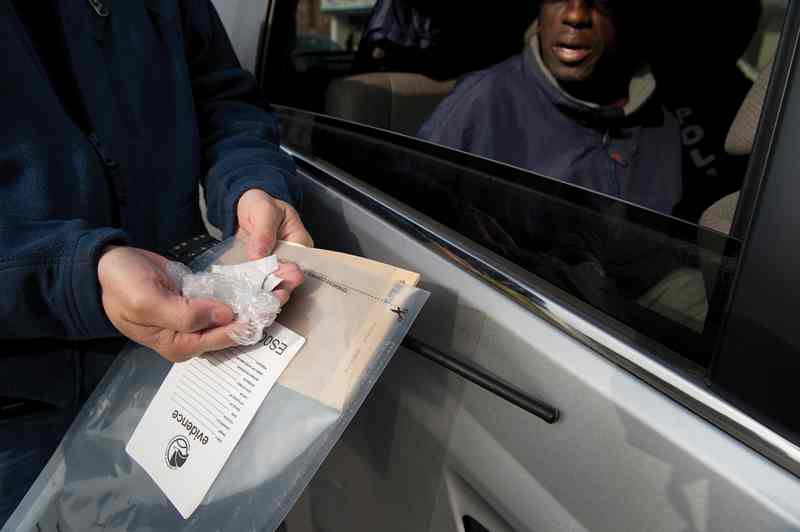
“The way that I run this operation, I learned a lot from athletics,” he explains. “And I learned a lot from athletics just by being around Notre Dame football. When you’re up against something, sometimes you don’t win all the time. You’ve got to keep your wits about you.”
Riley is the grandson of a Chicago police officer, the son of a “life-of-the-party” stay-at-home mother and a father, Dr. Ralph W. Riley ’50, who spent his career at Ingalls Memorial Hospital in an impoverished Chicago suburb.
Riley grew up as a jock in Chicago’s south suburbs. Basketball was his game, sometimes baseball and football, too. He never used drugs, never saw them in high school. Sneaking an occasional beer with the boys in a local park was thrill enough.
He went to Bradley University, planning to walk on to the basketball team. “I couldn’t even get in the front door of the gym,” he recalls. “I realized that day [my basketball career] was done.”
He majored in criminal justice. He can’t remember why. He had no firm career plans, so he headed to graduate school at the University of Illinois for a master’s in public administration. There, he met a DEA agent. He was hooked. After a three-year application process, he was accepted into the agency. He trained for 18 weeks at the Marine Corps base at Quantico, Virginia, next to the FBI training academy. He wrestled, he swam, he boxed, he learned to fire “every gun imaginable” and wore camouflage pants daily. “I always used to say I’m not going to wrestle with the guy,” he says. “You gave me a gun. I’m either going to hit him with my car or I’m going to shoot him.
“I couldn’t wait to get out of there,” he adds.
In 1985, U.S. Attorney General Edwin Meese gave Riley his credentials and sent him to work the Chicago streets. While Nancy Reagan was urging U.S. schoolchildren to just say no, Riley was posing undercover as a rich yuppie named John Lynch and having no problem finding people who just wanted to say yes.
Driving a white Mercedes with a gold grill and a trunk full of government cash, Riley would walk into a house alone, his heart pounding, and announce he wanted to buy some drugs. “I used to tell them I inherited this money and I’m trying to make more,” he recalls. “These people didn’t care. They were the worst of the worst. And if you had the money, they would bring you in.”
He built trust with low-level dealers, then worked his way up the chain as 10 to 15 agents on surveillance watched, ready to spring in to help if needed. He worked undercover throughout the United States and Mexico. “I bought from everybody,” he says, “from Irish guys to black street gang members to Italian organized-crime people. Cocaine was so prevalent then and such a moneymaker that virtually every criminal element at some point had something to do with selling drugs.”
There was no shortage of money the government was throwing at the agency to fight the cocaine epidemic. Riley and fellow agents once met an informant at a Chicago deli called the Dill Pickle to pay him for his services. “He was as nasty as the day is long,” Riley says. “If a rat goes down a sewer, you don’t send a swan down to catch him. You send a bigger rat.”
The informant signed a mound of forms. Riley gave him $50,000 cash. “He then left and went and bought a brand new Lincoln Town Car,” Riley says. “I think he got locked up a few months later.”
Riley worked his way through the agency, training new agents at Quantico, cracking a case involving Colombian drugs under U.S. Attorney General William Barr, heading offices in Milwaukee and St. Louis. When he was promoted to run the St. Louis office in 2000, Missouri was in the throes of the meth epidemic that would eventually reach all parts of the country. “I remember going to this trailer in the middle of nowhere — they had an active meth lab,” he says. “There was a guard dog which was a pit bull which we had to shoot. He was eating what I thought was a rib-eye steak that was cooked to order because he was so important to the operation.”
Behind the dog were three generations — grandparents in their 40s, children in their 20s, a baby crawling on a chemical-soaked carpet. “Three generations — this family’s just ruined,” he says. “You saw the meth ruin not only families but also communities; the social services were overwhelmed, the children were taken away, the cleanup site — you could never sell that house again because it had to be detoxed. And that was every day.”
In 2005, the DEA sent him to El Paso. Five years later, he was back in Chicago, running the office where he started as an undercover agent. The border where the Mexican cartels worked had moved north. So had he.
Along the border or in Chicago, Riley and his agents know who cartel members are talking about when they speak of the “three letters” — D, E and A. “That means they know we’re going to kick their ass,” he says.
Time to surrender?
In 2010, after reviewing a host of public documents, the Associated Press estimated that the U.S. government had spent $1 trillion in four decades of fighting illegal drugs in the United States. The New York Times put the estimate at $20 to $25 billion spent annually on counter-narcotics efforts. The AP figures included $33 billion in antidrug messages for America’s schoolchildren, $49 billion for law enforcement work along the U.S. border with Mexico and $121 billion in the arrest of more than 37 million nonviolent drug offenders. Ten million of those were arrested for marijuana possession.
Drug use has decreased since the 1970s, though marginally. In 1975, 45 percent of high school seniors reported using some sort of drug in the last 12 months in a National Institute on Drug Abuse-funded study, administered by the University of Michigan Institute for Social Research and called Monitoring the Future. In 2011, Monitoring the Future reported that 40 percent of high school seniors said that in the last 12 months they had used some sort of illegal narcotic, such as marijuana or heroin, or a legal drug like OxyContin or Ritalin to get high.
Though drug use is down, it’s far from gone. The 2012 government report “What America’s Users Spend on Illegal Drugs” estimated that drug users spent around $100 billion on cocaine, heroin, marijuana and methamphetamine in 2006, the most recent figures available. By way of comparison, the report stated that Americans spent slightly more — $116 billion — on alcoholic beverages annually.
Riley doesn’t think the drug war money is wasted — drug use is down across the board, though many are still using. But more and more voices are bringing more and more attention to the idea that the way the U.S. government is trying to stop drug use and trafficking is a complete waste of money. One of those speaking out is Sean Dunagan. A former intelligence analyst with the DEA, Dunagan worked in Miami, Guatemala City and Monterrey, Mexico. In Mexico, he saw the cartels at their most dangerous — his family was evacuated because it wasn’t safe for them to live there.
In 2011, though, Dunagan concluded the drug war was a bust and left the agency. “I had been there for 13 years and I could have been there for another 13 and the problem would not have gotten better,” he says. Now working for a nonprofit that promotes government transparency, Dunagan is a volunteer speaker with LEAP, or Law Enforcement Against Prohibition, a group of police officers and others in law enforcement pushing to legalize drugs. “By making these drugs illegal we’ve made it tremendously profitable and at the same time we’ve incentivized violence,” he says. “Drug traffickers don’t have access to courts.”
Dunagan doesn’t disagree that drug cartels and their actions constitute a moral evil. He doesn’t use drugs, doesn’t want his four children using drugs and doesn’t endorse anyone using drugs.
But he doesn’t think they should be illegal.
“When it comes to formulating a rational policy [regarding drugs] you really have to step back and analyze why this is such a violent business,” he says. “The problem with what we’re doing is we can arrest the most violent traffickers in the world and after tomorrow there will be 10 more violent traffickers. You see it at the block level, the city level, the cartel level.
“We’re arresting people,” he says. “But are we solving the problem?”
That’s entertainment?
The war on drugs — with its violence, intrigue, narrative plots and shady characters — offers prime storylines for media and the movies. On television recently, viewers have been sucked into the worlds of Nancy Botwin on Weeds and Walter White on Breaking Bad. Ordinary folks down on their luck, both characters descend into the criminal underworld. Botwin, a widow with two young sons, deals marijuana. White, diagnosed with terminal cancer, seeks to produce high-quality methamphetamine.
In Chicago over the summer, less than a mile from Wrigley Field, a billboard touted a popular Spanish-language soap opera called Pablo Escobar: El Patron del Mal, featuring a menacing-looking middle-aged man surrounded by a pile of cash. The 2012 Colombian-produced series was a “narco novela,” a prime-time serial focused on drug lord Pablo Escobar. Nearly 2.2 million viewers in the United States watched its July 9 premier on Telemundo.
Riley’s not one to watch many of the drug movies — he thinks Hollywood glamorizes drug use. But when he was working in El Paso, he visited the New Mexico set of Breaking Bad to help correctly set up the show’s mobile meth lab. The idea that the girl or guy next door will rise to the level of drug kingpin is absurd, he says. “Usually they’re victims from day one,” he says. “They get caught in the middle of it. A lot of people don’t understand once you get involved in this it’s very, very difficult to get out. And usually two things happen. You go to jail. Or you get killed.” Riley sees few happy endings.
“The severity of the people using drugs now, their lives are ruined,” he says. “And that goes from a pilot to a reporter to a policeman. There’s no coming back from it.” Treatment can be successful, he says, but more often it isn’t. “I don’t know a whole lot of people that it’s been successful for,” he says. “Other than that it ruined their financial status, their family’s gone broke. You can’t just return these people back to the same social structure that caused it.”
A new front to the war
At Chicago City Hall, seven blocks from Riley’s office, politicians spent much of 2012 talking about drugs. And it wasn’t only because of the $10 million marijuana crop found growing outdoors on the South Side in October.
In June, the Chicago City Council voted to ticket those possessing small amounts of marijuana instead of arresting them. While the city council members gave a lot of lip service to the notion that the $250 to $500 tickets might send a mixed message to the city’s teenagers, they voted 43-3 in favor of Mayor Rahm Emanuel’s decriminalization plan.
Cook County Board President Toni Preckwinkle wasn’t shy about pushing for marijuana decriminalization, noting that the low-level arrests of mostly Latinos and African-Americans were clogging the county jail she was responsible for as well as state prisons. She told an audience during a seminar that former President Ronald Reagan deserved a “special place in hell” for his role in the drug war. She later issued a written apology for the remark but also noted: “Drugs, and the failed war on drugs, have devastated lives, families and communities. For too long we’ve treated drug use as a criminal justice issue rather than a public health issue, which is what it is.”
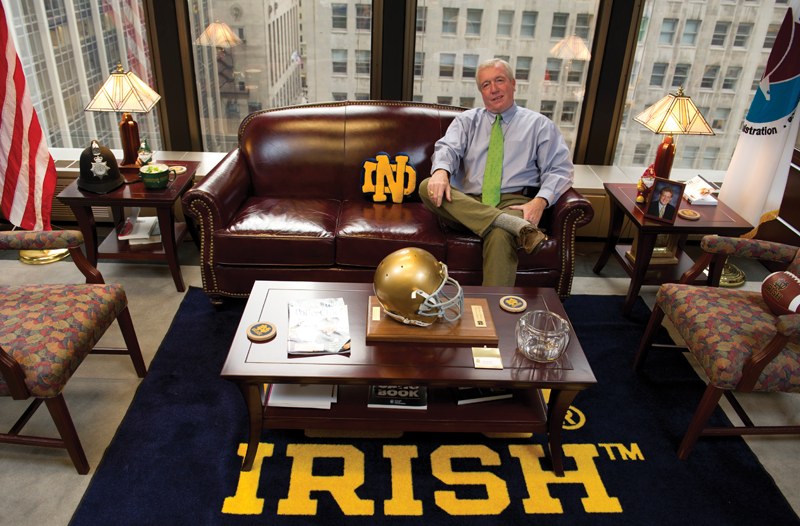
For Riley, marijuana decriminalization can’t be separated from his battle against Mexican cartels. The city council missed the big picture, he says. “The number one [cartel] cash crop is marijuana,” he says. “If you’re carrying 10 grams, that 10 grams just came from Chapo Guzman, who just beheaded 15 people.”
Those arrested for personal use amounts of marijuana weren’t being prosecuted, and decriminalization proponents said ticketing offenders was a way to free up Chicago police officers to work on bigger crimes. And in the summer of 2012, there was plenty of heat on the street.
On October 28, Chicago marked a grim milestone — the number of murders in 2012 tied the number of murders in all of 2011. Fitz Bariffe, a retired CTA bus driver, had put up a metal fence around his South Side home because of problems with people drinking and using drugs on his block. It didn’t stop an intruder from breaking in and fatally shooting him in the kitchen.
Overwhelmingly, the murders were gang-related. Street gangs, regardless of the race of their members, are the ground-level distribution network for cartels.
“A lot of that is obviously drug-related, gang-related, fighting for turf, fighting for control, retaliation and just poor marksmanship,” Riley says. “These guys don’t go to the range.”
The suburbs were dealing with their own drug issues. In July, a 20-year-old man fatally overdosed on heroin in Naperville, Illinois, the second heroin overdose in the suburb in 2012 and the eighth in the last year and a half. The deaths in a town named one of MONEY Magazine’s Best Places to Live in America — and other deaths in similar suburban Shangri-Las — shone a spotlight on the rise of the drug throughout the suburbs. Hundreds of concerned parents flocked to town hall meetings to learn how a drug associated with total burnouts was now killing kids in their town.
The gateway to heroin is often prescription painkillers found in the family medicine chest. Young adults get hooked, run out of cash or access to the pills and then find a cheap substitute, heroin, more powerful than ever and smoked or snorted instead of injected. It’s sold on Chicago’s West Side — a quick trip off the highway.
Prescription painkiller abuse is skyrocketing, Riley says.
“I mean, last year more people died of overdoses on prescription drugs than coke, marijuana, methamphetamine and automobile accidents put together,” he explains. “Organized criminal robbers, the same guys that maybe 20 years ago would rob banks? They now go from pharmacy to pharmacy, busting in, stealing specific drugs, OxyContin, vicodin, those type of pain controls. They put them on the street.”
Riley says street gangs are now selling prescription drugs. “I always tell people it’s coming to a town near you if it’s not there,” he says. “And it is there. You’ve got to open your eyes.”
Riley can’t separate what he sees on the toughest Chicago streets from casual drug use in the city or suburbs. “For someone to sit on their porch in Hinsdale or a wealthy place and smoke marijuana or snort coke, they’re part of the problem, too,” he says.
Riley refuses to say the war on drugs has been a failure, that his efforts and those of the men and women he’s worked with — some of whom have died on the job — are meaningless. “The fact that people say we failed at the war on drugs really pisses me off,” he says. “Because it denotes there’s a beginning and an end. There’s a war on homicide. We haven’t won that war either, but we’re not giving up.
“I just think people look to an end to something…that’s part
of our culture.” Fighting drugs is a marathon, he says, not a sprint. And regardless of the resources, law enforcement can’t win this one on its own. “We can’t arrest our way out of our problem,” he says. “I don’t understand why parents don’t take a tougher role with their children. I’ve always said from day one it starts at the dinner table. You got to be involved. Educators got to be involved. Faith-based practitioners got to be involved.”
Riley’s role in law enforcement is focused on fighting drug cartels, but he wishes more families had the sense to fight for their own survival. “You don’t let a team member wander,” he says. “Well, there’s no better team than a family.”
In three years, when Riley hits 57 and must retire, he knows there will still be drug abusers, drug sellers and drug distributors. He hopes there will be fewer of them, and a greater awareness of the systematic harm he believes the drug trade is wreaking. “I want to make sure when I leave here it’s better than when I got here.”
Kara Spak is a reporter for the Chicago Sun-Times.
Photographs by Barbara Johnston
